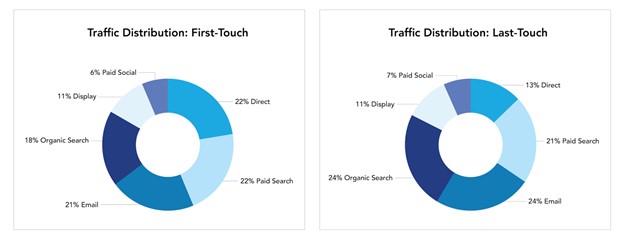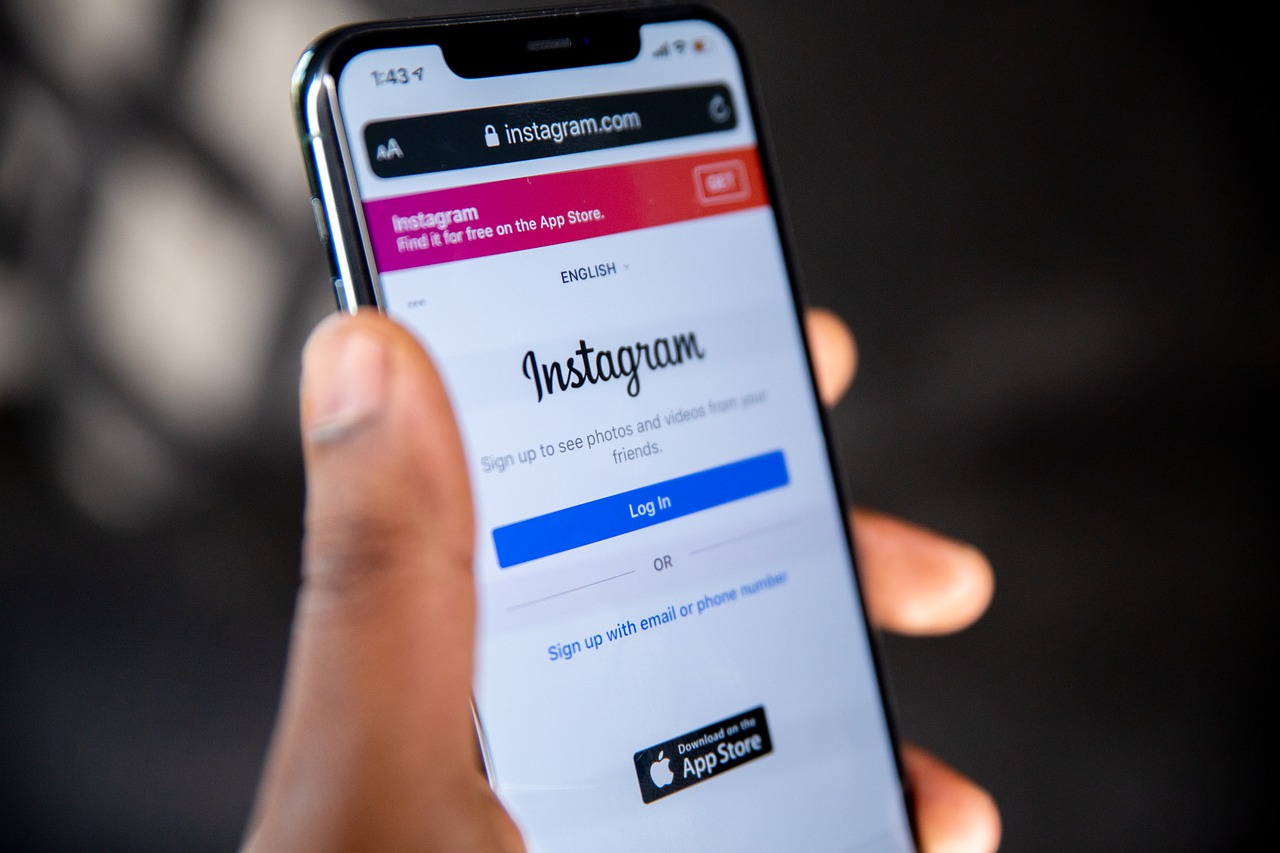How To Increase Conversions With This 6-Step Customer Journey Analysis via @sejournal, @DAC_group
Learn how to improve conversion rates for all of your marketing campaigns by tying attribution to each part of the customer journey. The post How To Increase Conversions With This 6-Step Customer Journey Analysis appeared first on Search Engine...

This post was sponsored by DAC Group. The opinions expressed in this article are the sponsor’s own.
To create websites and marketing campaigns that will increase conversions, you must understand what your customers need and when they need it.
What inspires a prospect to connect with you or buy your product from start to finish?
What should you double down on to increase your profit and ROI?
In digital marketing, one of the most potent keys is understanding the entire customer journey to make informed strategic and resourcing decisions.
But, as any SEO practitioner will tell you, it can be exceedingly difficult to gauge the impact of any one digital tactic, never mind a complex web of nonlinear user touchpoints.
TABLE OF CONTENTS
1. What Is A Customer Journey?2. What Is A Marketing Funnel?3. What Is Attribution?4. Which Types Of Attribution You Should Focus On?5. First-Touch Attribution: Capturing Initial Engagement6. Last-Touch Attribution: Closing The Conversion Loop7. Best Of Both Worlds: Layering First- And Last-Touch For Holistic Insights8. Analyze How Users Are Exposed To Your Site9. Assess The Likelihood Of A Session Converting10. Determine The Impact Of Your First Entry Point On Last-Touch Conversion Rates11. Determine The Impact Of Your First Entry Point On Last-Touch Average Order Values12. Evaluate The Contribution Of Early-Journey Marketing On Other Channel Revenue13. Measure The Impact Of Early-Journey Content (Blog)In this article, you will learn how first-touch and last-touch attribution can be deployed together to reveal the contributions of each channel – including organic search – and transform your understanding of the customer journey from the initial spark of awareness to the decisive moment of conversion.
To get started, let’s travel through the foundation of multi-touch attribution: the customer journey and how to attribute each touchpoint to a sale.
The first stop is understanding the entire customer journey.
What Is A Customer Journey?
A customer journey is a marketing term that helps explain how each prospect transforms from being introduced to your brand to becoming a customer.
In essence, the customer journey is a vital tool for any website that needs to convert visitors because it provides a blueprint for creating an effective, user-centered design that directly addresses users’ needs and behaviors.
This strategic approach improves the user experience and drives higher conversion rates, ultimately contributing to your business’s bottom line.
At a granular level, every touchpoint a prospect has with your brand’s content is another step on that journey – another piece that convinces a shopper to become a buyer.
As you can imagine, each customer journey is entirely different. Every user has unique and distinct needs that are met by multiple touchpoints with your brand. These touchpoints help your prospect make the final decision to convert.
In an ideal world, your brand has hundreds of pieces of content, web pages, articles, blogs, ads, emails, social media posts, and traditional marketing assets that influence a shopper or visitor to interact with your services or buy your product.
While it’s crucial to your overall marketing strategy, individual customer journeys are too numerous to study at such a granular level.
So, to help you track and optimize what’s working within your library of marketing assets, it helps to categorize each journey into a high-level picture known as a marketing funnel. From there, you’ll gain the ability to better identify which marketing tactics transform the most visitors into customers.
What Is A Marketing Funnel?
A traditional marketing funnel consists of five layers representing a group of potential customers along their high-level customer journey.
The layers of a marketing funnel typically include:
Awareness. Interest. Consideration. Nuture. Conversion.Most of your new customers will start in the largest and highest part of the “funnel,” the Awareness stage. This is where they learn about your brand and is often the first touchpoint a new prospect has with your products.
From there, they may become interested in what your brand has to say or what you offer. They then consider taking steps towards purchasing from you and are ready to be nurtured into a conversion, which usually consists of a sale.
To make the most of your marketing funnel, it’s essential to know what draws the highest percentage of potential customers into your brand and what pieces convince the highest percentage of potential buyers to become buyers.
Once you have that information, you can optimize your additional content to match your top-performing pieces and earn more sales.
But how do we know precisely what content in the entire funnel caused a sale for each customer? Attribution.
What Is Attribution?
Marketing attribution is the process of tying a conversion to a piece of marketing material.
Attribution lets you see exactly which pieces of content were the most effective at convincing a visitor to become a customer.
This can be done by utilizing tracking codes, such as UTMs and pixels, phone call tracking, and dedicated URLs created with services like Bitly.
To understand what types of tracking you should implement, we first need to learn about the different types of attribution.
Which Types Of Attribution You Should Focus On?
There are many types of marketing attribution you should focus on , but the most effective to build out your first, but powerful multi-touch campaign are:
First-Touch Attribution. Last-Touch Attribution.Traditionally, you may have looked to first-touch and last-touch attribution models to optimize your campaigns for maximum impact.
As you’ll see, each approach has its benefits, but when you combine them, you create something far greater than the sum of its parts: multi-touch attribution.
Today, we’ll focus on increasing your conversions by studying a user’s first- and last-touch attribution with your brand’s marketing materials.
First-Touch Attribution: Capturing Initial Engagement
First-touch attribution places emphasis on the very first interaction a user has with your brand.
This initial touch point can occur on various channels, such as social media, organic search, or via referral links. Common web analytics tools like Google Analytics 4 and Adobe Analytics offer customizable attribution models in their Explore and Workspace reports to track initial touch points effectively. Utilize the ‘Model Comparison’ tool in Google Analytics 4 to optimize channel valuation and inform strategic decisions.
Although it’s a long way removed from the final conversion, there are some key benefits to incorporating first-touch attribution into your digital marketing strategy:
Understanding awareness: First-touch attribution allows marketers to gauge the effectiveness of their top-of-funnel marketing efforts. By identifying the channels that attract users initially, brands can optimize their awareness-building strategies to better “feed the funnel”. Budget allocation: Knowing which channels are responsible for the first interaction can help you allocate marketing budgets more efficiently. By investing in the channels that drive initial engagement, marketers can optimize their spending and improve ROI. Tailoring content: Analyzing the first touch point provides insights into the type of content that resonates with the audience. Marketers can then tailor their content strategies to create more engaging and relevant material for their target audiences.Last-Touch Attribution: Closing The Conversion Loop
On the flip side, last-touch attribution identifies only the final interaction before a conversion event.
Though it’s a relatively one-dimensional metric, last-touch attribution offers various benefits:
Conversion optimization: By focusing on the last touch point, marketers can identify the specific channels or campaigns that directly contribute to conversions. This information is crucial for refining strategies and optimizing campaigns for higher conversion rates. Efficient resource allocation: Just as with first-touch attribution, understanding the last touch point can help you allocate resources more effectively. Marketers can invest more in the channels or campaigns that have a direct impact on closing deals and generating revenue. Campaign effectiveness: Last-touch attribution provides a clear picture of which marketing effort is directly responsible for driving users to take the desired action. This insight is invaluable for measuring the success of specific campaigns and making data-driven decisions. Image created by DAC Group, March 2024
Image created by DAC Group, March 2024
Best Of Both Worlds: Layering First- And Last-Touch For Holistic Insights
While each attribution model offers unique insights, combining first-touch and last-touch attribution provides a much more detailed and nuanced view of the customer journey.
The result: multi-touch attribution, allows marketers to understand the entire conversion path and make informed decisions at every stage. In other words, multi-touch attribution will supercharge your insights in various different ways.
These are six of the most common.
1. Analyze How Users Are Exposed To Your Site
When using first-touch attribution, clicks are counted based on the first channel that drove a user to the site.
Using this methodology empowers marketers to better understand the value of each channel in generating initial site exposure.
When using a typical last-touch attribution model, clicks are counted only for the last channel a user engaged with. This can often over-value contributions from channels that are heavily skewed towards the end of the conversion funnel.
Adopting multi-touch attribution blends the first-touch and last-touch perspectives, distributing credit across the customer’s journey.
This approach provides a more detailed view of each channel’s role, from initial interest to final conversion, and mitigates the risk of over-valuing the last interaction or undervaluing the first.
 Image created by Search Engine Journal
Image created by Search Engine Journal
2. Assess The Likelihood Of A Session Converting
In typical last-touch attribution, conversion rates are based on the channel a user last interacted with.
This will tend to value late-journey channels and tactics while ignoring the impact of early-journey efforts.
By also analyzing first-touch conversion rates, marketers can better understand the value of early-journey marketing tactics and channels.
 Image created by DAC Group, March 2024
Image created by DAC Group, March 2024
3. Determine The Impact Of Your First Entry Point On Last-Touch Conversion Rates
In this analysis, we look at the impact of early-journey marketing on last-touch conversion rates.
To do so, we compare the typical channel conversion rate to that of when organic search was the first entry point. This allows us to measure the value of deploying early-journey tactics and evaluate how they impact late-journey performance.
In this particular instance, we found that almost every channel had a higher conversion rate when organic search was the first entry point:
 Image created by DAC Group, March 2024
Image created by DAC Group, March 2024
4. Determine The Impact Of Your First Entry Point On Last-Touch Average Order Values
Like analyzing the impact of the first-touch channel on conversion rates, analysis can be conducted to determine the impact of a user’s first entry point on their later order value.
In this instance, we found that when organic search was the first touch point, almost all last-touch channels saw an increase in average order value.
 Image created by DAC Group, March 2024
Image created by DAC Group, March 2024
5. Evaluate The Contribution Of Early-Journey Marketing On Other Channel Revenue
By comparing revenue attribution across first-touch and last-touch, marketers can better understand how much generated revenue is attributed to another channel.
This is particularly useful in understanding the role of each channel when guiding users throughout the conversion journey.
In the below example, DAC discovered that 38% of revenue driven by first-touch organic search was later attributed to other channels:
 Image created by DAC Group, March 2024
Image created by DAC Group, March 2024
6. Measure The Impact Of Early-Journey Content (Blog)
Oftentimes, early-journey research and informational content is under-valued when measured via last-touch attribution.
This type of content tends to have fewer immediate conversions. As such, measuring via last-touch will attribute downstream conversions to the final channel. When viewed on a longer timeline, we found that blog visitors tend to return to the site within five weeks to make purchases.
Using last-touch attribution alone, this trend would not have been identified.
Beyond analyzing whether or not blog users convert, we can also look at the impact on conversions.
In analyzing, we found that users who visit the blog convert at a higher rate, have higher page views per visit, and a much lower bounce rate.
 Image created by DAC Group, March 2024
Image created by DAC Group, March 2024
In the ever-evolving landscape of digital marketing, understanding how customers interact with your brand is essential for success.
First-touch and Last-touch attribution models offer distinct advantages, from optimizing awareness-building strategies to refining conversion-focused campaigns. By leveraging the insights provided by these attribution models and layering them together, marketers can create more effective and targeted campaigns, ultimately driving better results and maximizing return on investment.
Image Credits
Featured Image: Image by DAC Group. Used with permission.

 JimMin
JimMin 































